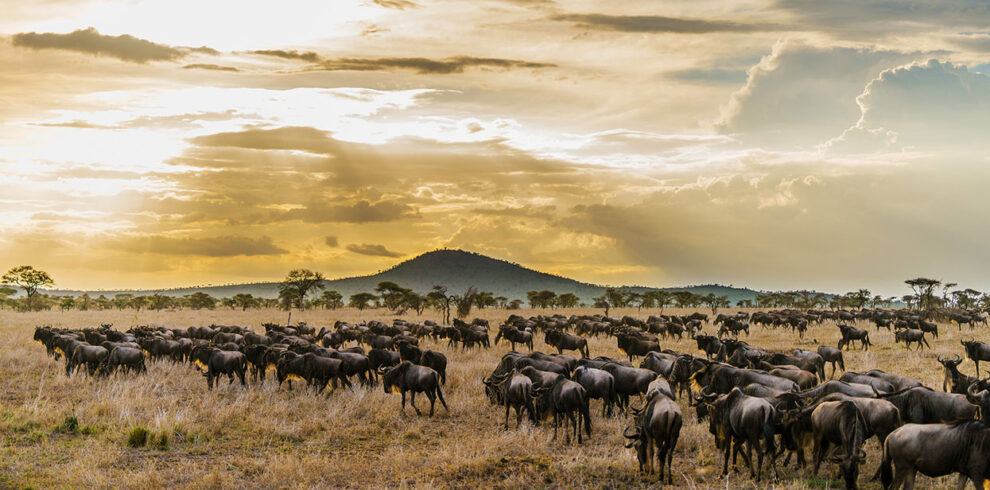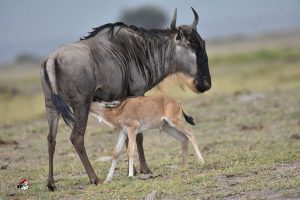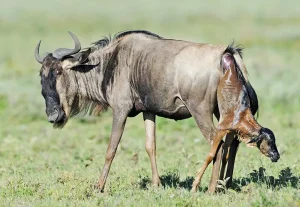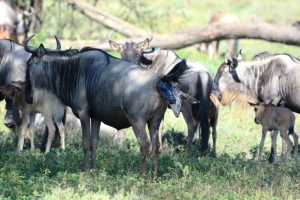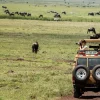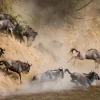What Is the Great Wildebeest Migration?
The Great Wildebeest Migration is one of the largest overland wildlife movements on Earth and a true wonder of the natural world. Each year, over 1.5 million wildebeests, along with more than 300,000 zebras and gazelles, travel through the vast plains of Tanzania’s Serengeti National Park and Kenya’s Masai Mara in search of fresh grazing and water.
This cyclical migration is driven by the rhythm of the rains, following a roughly year-long circuit. Along the way, the animals must confront predators such as lions, crocodiles, cheetahs, and hyenas, making it one of the most thrilling safari spectacles for wildlife enthusiasts and photographers alike.
Best Time to See the Wildebeest Migration
The migration happens year-round, but the best times to witness key moments depend on where you go and when:
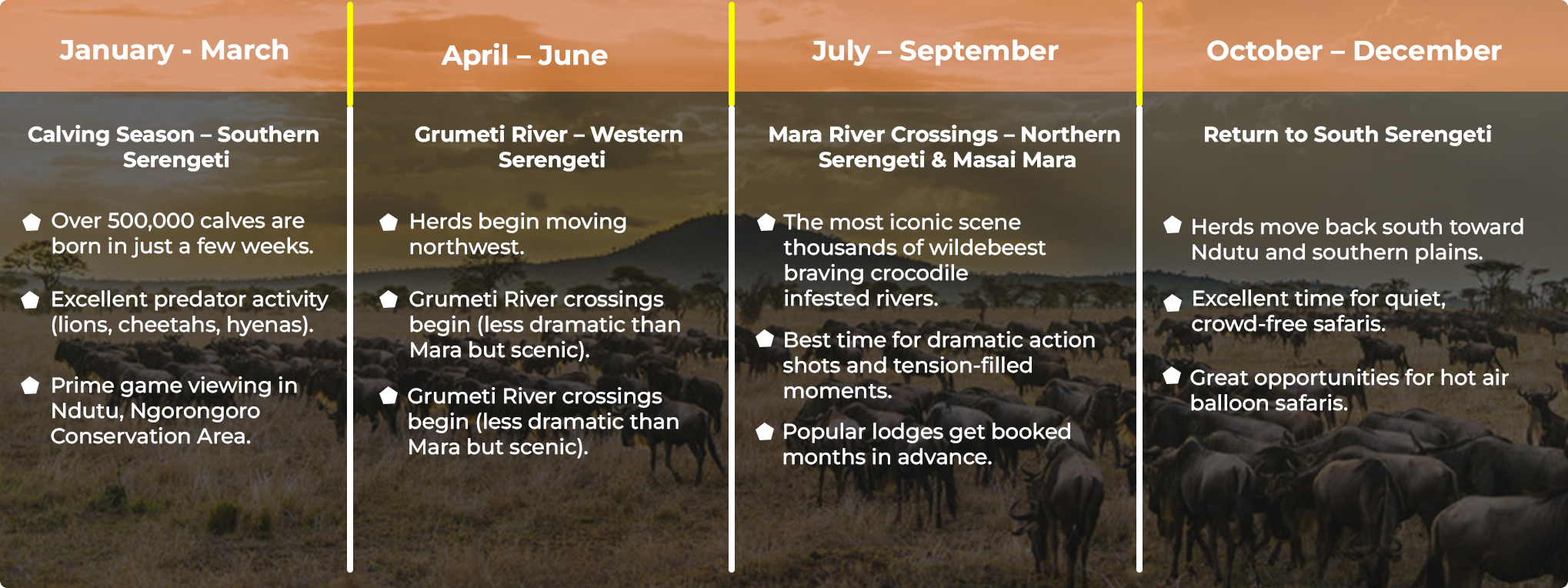
Wildebeest Migration Route Map
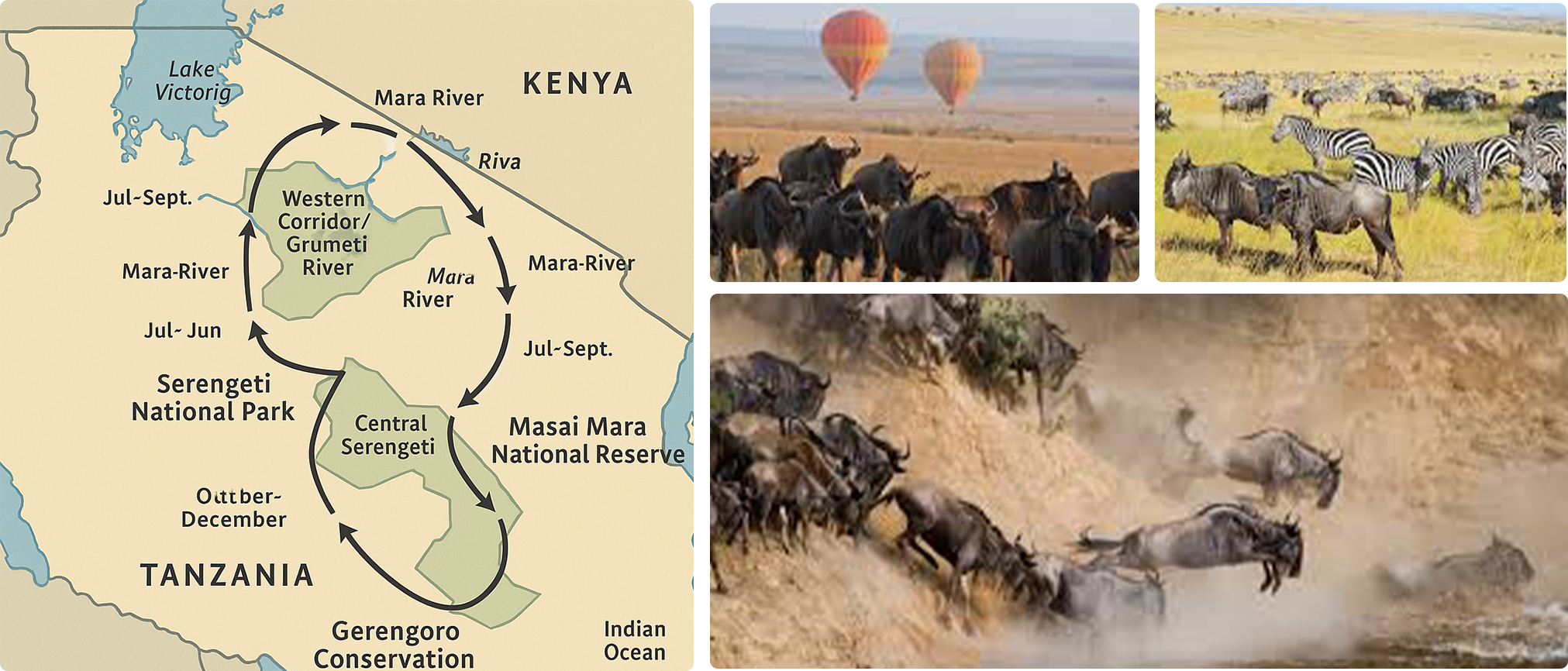
Where to See the Migration
Here are the top locations to catch the migration based on the time of year
Serengeti National Park (Tanzania)
- Best viewed from January to June and October to December.
- Ndutu, Seronera, and Grumeti regions are migration hotspots.
- Offers year-round game viewing even outside peak migration.
Masai Mara National Reserve (Kenya)
- Best between July and October during the river crossings.
- Home to dramatic predator-prey action and excellent lodges.
Tips for Planning Your Migration Safari
- Book Early: Especially from June to October, lodges fill fast.
- Choose the Right Region: Base your location on the time of year.
- Use a Trusted Operator: Companies like Africa Comfortable Tours ensure expert guiding and customized experiences.
- Stay Multiple Days: Increase your chances of witnessing key moments like river crossings or calving.
- Bring the Right Gear: Binoculars, a zoom lens, a hat, sunscreen, and neutral-colored clothing are essentials.
Frequently Asked Questions
Is the migration the same every year?
Generally, yes—but the exact timing and routes may shift slightly due to changes in rainfall patterns.
How long should my safari be to see the migration?
Plan for at least 5–7 days to increase your chances of witnessing dramatic moments, such as a river crossing or calving.
Can I see other animals during the migration?
Absolutely! You’ll also see elephants, lions, giraffes, buffalo, leopards, and over 500 species of birds.
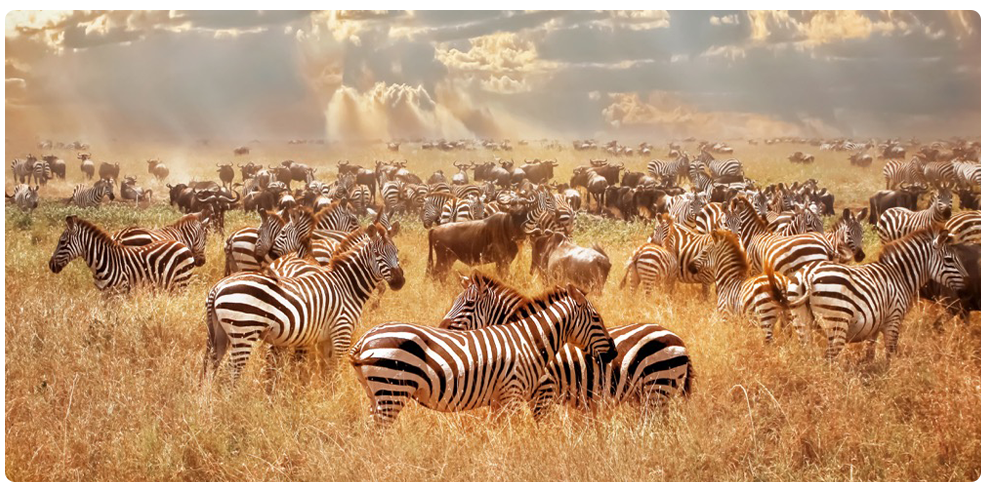
Ready to Witness the Migration?
Don’t just read about it—experience it! The Great Wildebeest Migration is a bucket list adventure that deserves to be seen up close. Whether you’re after heart-pounding action or serene plains filled with new life, this natural wonder offers something unforgettable for every traveler.
Explore Our Wildebeest Migration Safari Packages Now >>
